Jingcun Wang
Basis Sharing: Cross-Layer Parameter Sharing for Large Language Model Compression
Oct 02, 2024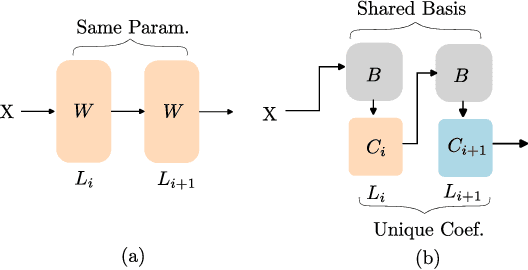
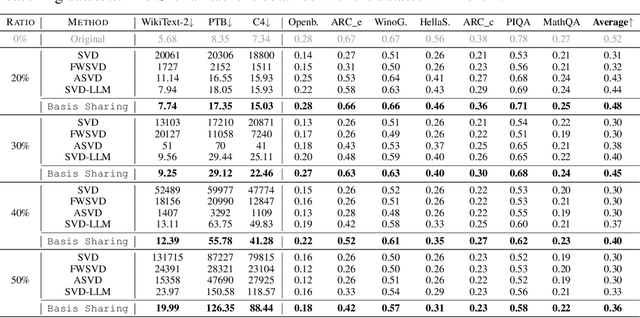
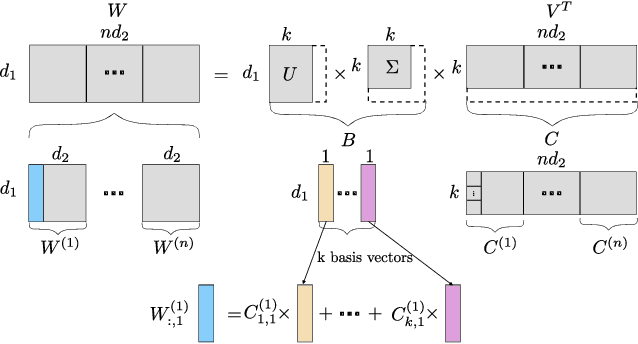

Abstract:Large Language Models (LLMs) have achieved remarkable breakthroughs. However, the huge number of parameters in LLMs require significant amount of memory storage in inference, which prevents their practical deployment in many applications. To reduce memory storage of LLMs, singular value decomposition (SVD) provides a promising solution to approximate weight matrices for compressing LLMs. In this paper, we take a step further to explore parameter sharing across different layers with SVD to achieve more effective compression for LLMs. Specifically, weight matrices in different layers are decomposed and represented as a linear combination of a set of shared basis vectors and unique coefficients. The types of weight matrices and the layer selection for basis sharing are examined when compressing LLMs to maintain the performance. Comprehensive experiments demonstrate that Basis Sharing outperforms state-of-the-art SVD-based compression approaches and parameter sharing techniques, especially under large compression ratios. Code is available at: https://github.com/TUDa-HWAI/Basis_Sharing
Class-Aware Pruning for Efficient Neural Networks
Dec 10, 2023



Abstract:Deep neural networks (DNNs) have demonstrated remarkable success in various fields. However, the large number of floating-point operations (FLOPs) in DNNs poses challenges for their deployment in resource-constrained applications, e.g., edge devices. To address the problem, pruning has been introduced to reduce the computational cost in executing DNNs. Previous pruning strategies are based on weight values, gradient values and activation outputs. Different from previous pruning solutions, in this paper, we propose a class-aware pruning technique to compress DNNs, which provides a novel perspective to reduce the computational cost of DNNs. In each iteration, the neural network training is modified to facilitate the class-aware pruning. Afterwards, the importance of filters with respect to the number of classes is evaluated. The filters that are only important for a few number of classes are removed. The neural network is then retrained to compensate for the incurred accuracy loss. The pruning iterations end until no filter can be removed anymore, indicating that the remaining filters are very important for many classes. This pruning technique outperforms previous pruning solutions in terms of accuracy, pruning ratio and the reduction of FLOPs. Experimental results confirm that this class-aware pruning technique can significantly reduce the number of weights and FLOPs, while maintaining a high inference accuracy.
Early Classification for Dynamic Inference of Neural Networks
Sep 23, 2023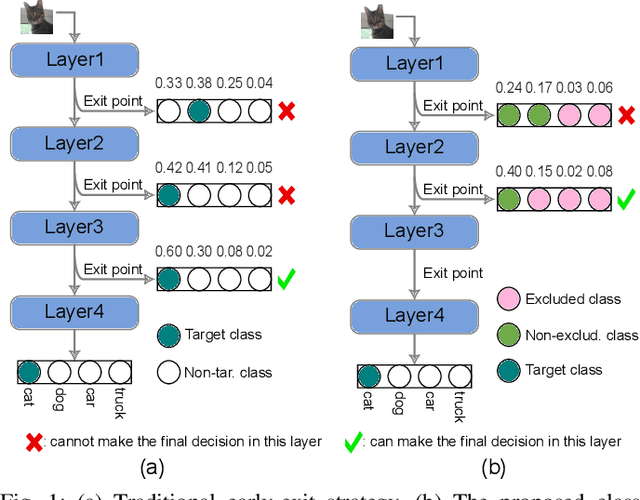
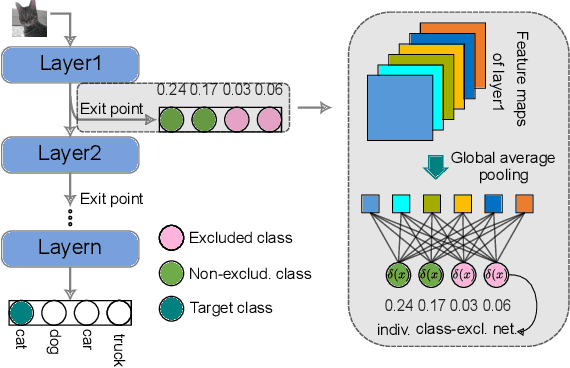
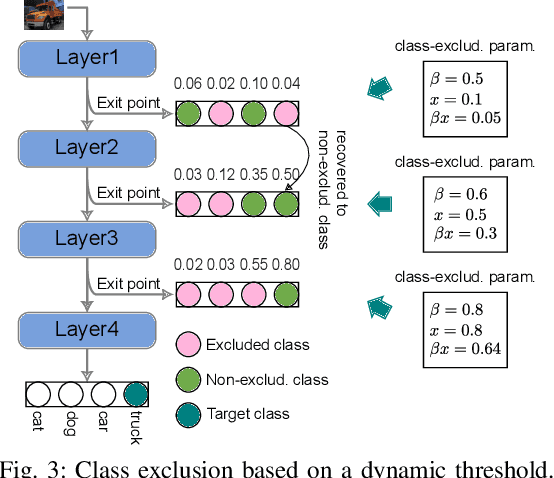
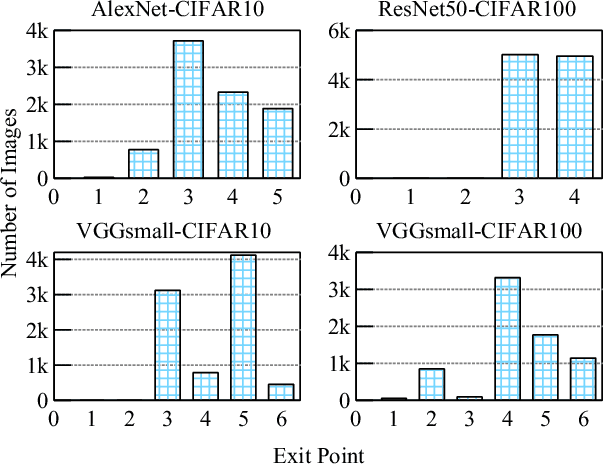
Abstract:Deep neural networks (DNNs) have been successfully applied in various fields. In DNNs, a large number of multiply-accumulate (MAC) operations is required to be performed, posing critical challenges in applying them in resource-constrained platforms, e.g., edge devices. Dynamic neural networks have been introduced to allow a structural adaption, e.g., early-exit, according to different inputs to reduce the computational cost of DNNs. Existing early-exit techniques deploy classifiers at intermediate layers of DNNs to push them to make a classification decision as early as possible. However, the learned features at early layers might not be sufficient to exclude all the irrelevant classes and decide the correct class, leading to suboptimal results. To address this challenge, in this paper, we propose a class-based early-exit for dynamic inference. Instead of pushing DNNs to make a dynamic decision at intermediate layers, we take advantages of the learned features in these layers to exclude as many irrelevant classes as possible, so that later layers only have to determine the target class among the remaining classes. Until at a layer only one class remains, this class is the corresponding classification result. To realize this class-based exclusion, we assign each class with a classifier at intermediate layers and train the networks together with these classifiers. Afterwards, an exclusion strategy is developed to exclude irrelevant classes at early layers. Experimental results demonstrate the computational cost of DNNs in inference can be reduced significantly.
 Add to Chrome
Add to Chrome Add to Firefox
Add to Firefox Add to Edge
Add to Edge